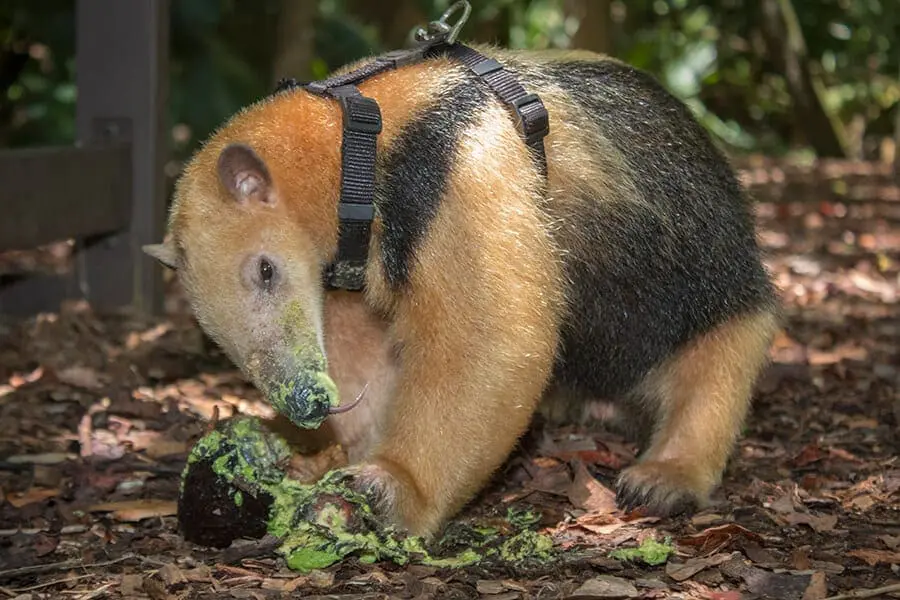

Corduroy enjoying one of his favorite treats—a tasty avocado.
It’s hard to imagine eating thousands of insects (or even one, for that matter) every single day, but that’s exactly what anteaters do—and, boy, are they good at it! When feeding, the anteater’s sticky, impressively long tongue (up to 20 inches in the giant anteater) will flick between its mouth and the food source more than 100 times per minute. The adaptations don’t stop there—thick, coarse fur keeps angry insects from reaching their skin, and massive front claws are perfect for tearing up anthills and termite mounds.
The first anteaters appeared in South America millions of years ago, sharing ancestry with sloths and armadillos. Today you’ll find four anteater species in Central and South America: the giant anteater (the largest), silky anteater (the smallest) and northern and southern tamanduas (also known as “tree anteaters”). Unlike their larger cousins, silky anteaters and tamanduas have a highly flexible tail that can be used as an extra hand or foot while climbing. When threatened, tamanduas may emit an unpleasant odor from their anal glands said to be many times more pungent than that of a skunk.
The Zoo is home to two giant anteaters: 14-year-old male Abner and 16-year-old female Boo; and two southern tamanduas; seven-year-old male Corduroy and six-year old female Pebbles. You can find both pairs in the La Selva loop.
Although they’re classified as species of least concern, tamanduas are threatened by the illegal pet trade in some areas. Luckily, the Pan-American Conservation Association (APPC) is working to combat this issue; over the past ten years, the APPC has rescued, rehabilitated and released over 2,000 animals, many of which were tamanduas!
Things are a bit grimmer for the giant anteaters; they are considered vulnerable by the International Union for Conservation of Nature. The biggest threats to their survival are habitat loss, which can lead to fatal interactions with motor vehicles, and fires both wild and manmade. The Anteaters and Highways Project, which we supported last year through our Quarters for Conservation program, equips wild giant anteaters with GPS harnesses to determine the impact roadways have on these animals.
Anteaters big and small are unique and wondrous species. Though they’re not found in the wilderness of the United States, you can meet Abner, Boo, Corduroy and Pebbles up close and in person at the Zoo as part of the Jungle Encounter!
